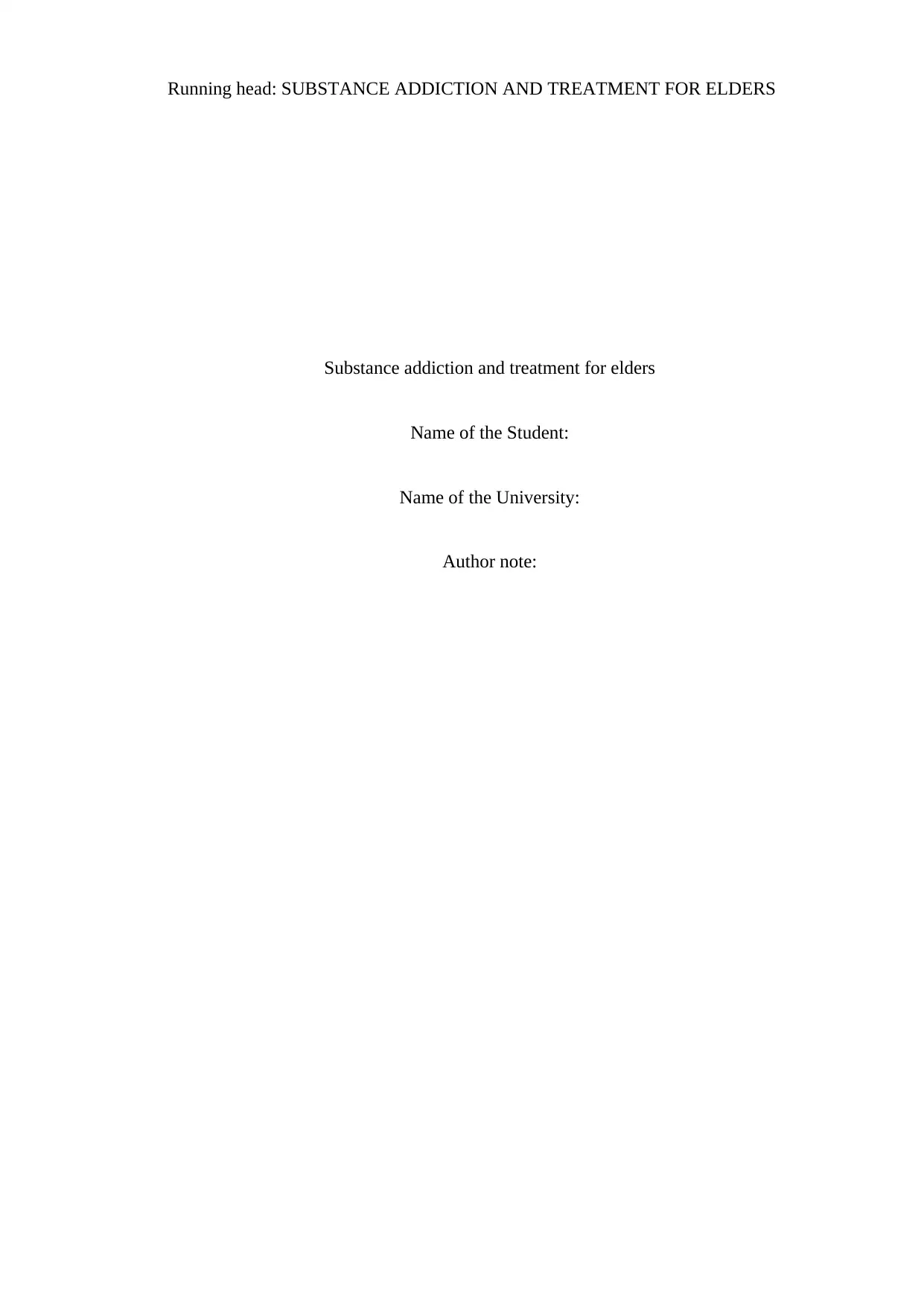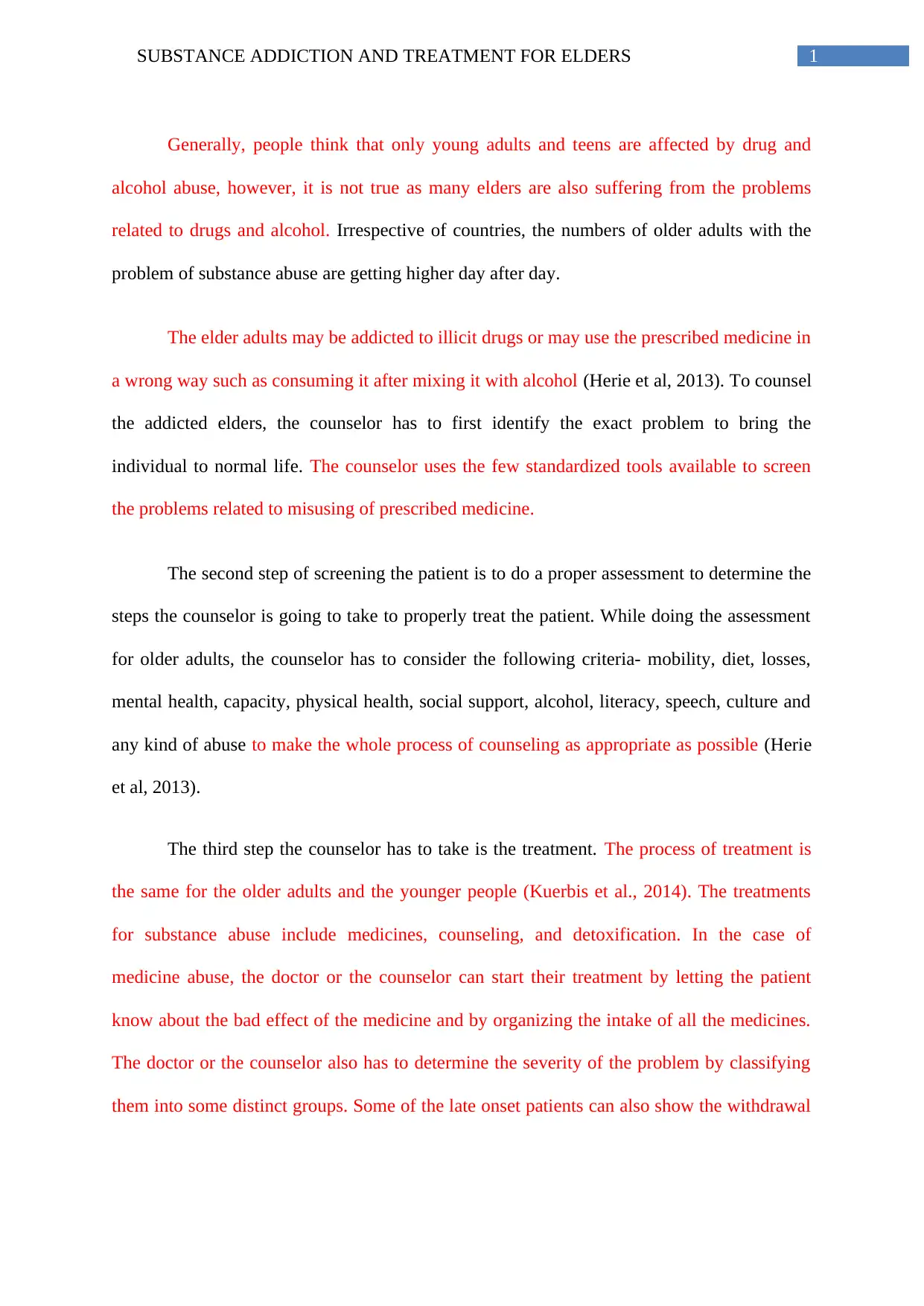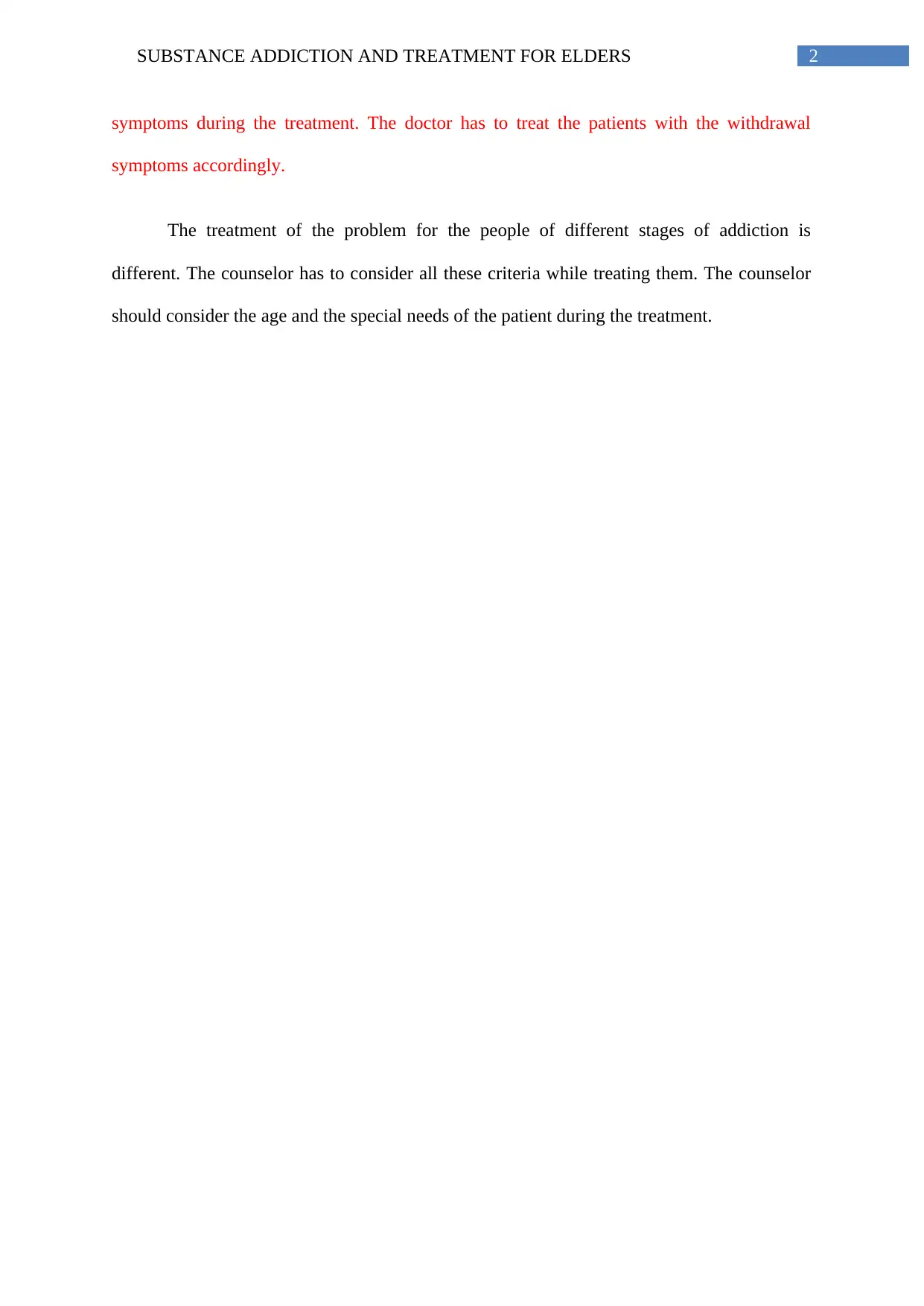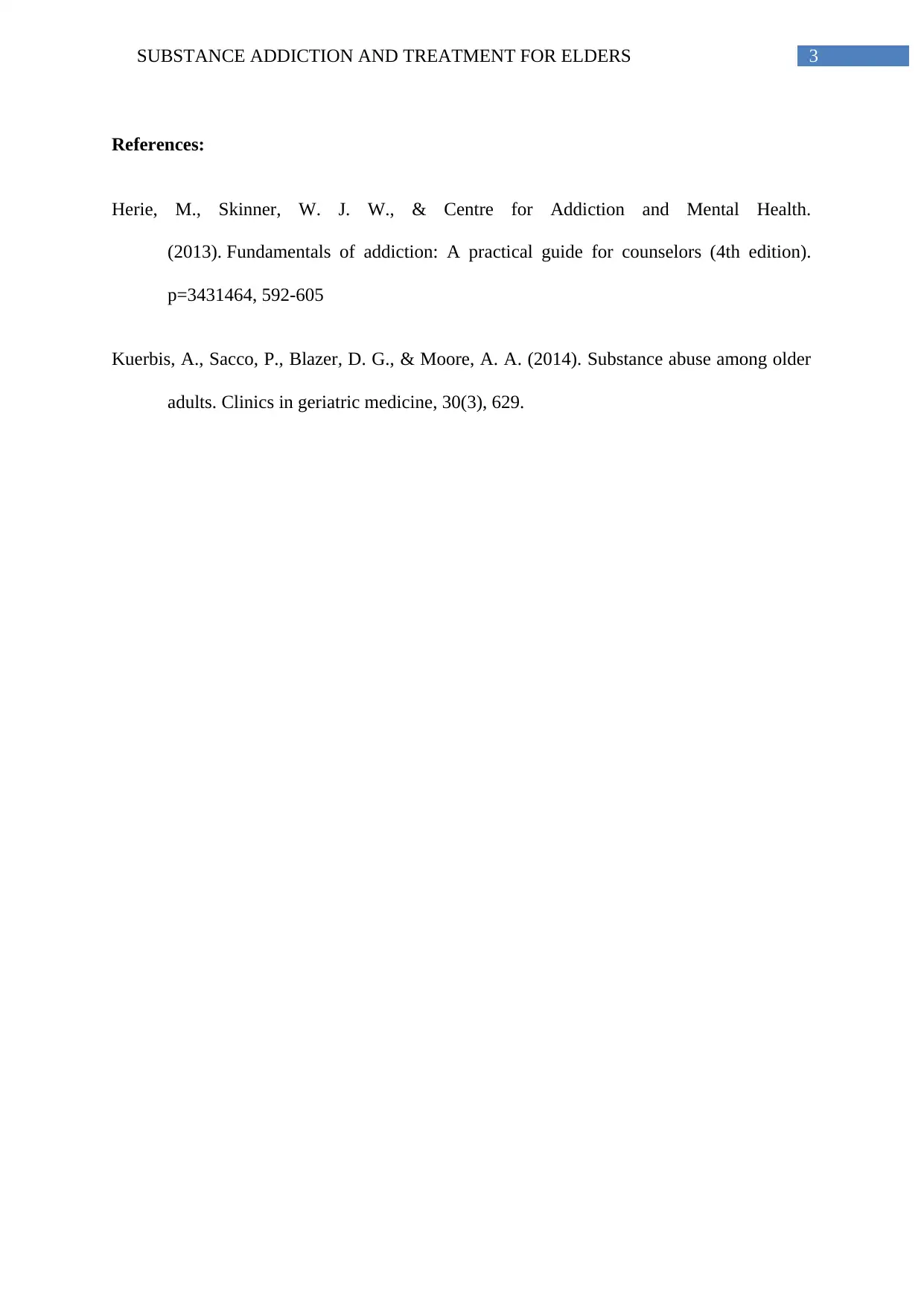A Report on Substance Addiction and Treatment for Elderly Individuals
VerifiedAdded on 2020/03/16
|4
|532
|44
Report
AI Summary
This report discusses substance addiction and treatment strategies specifically tailored for elderly individuals. It begins by highlighting the prevalence of substance abuse among older adults, including both illicit drugs and the misuse of prescribed medications. The report emphasizes the importance of a thorough assessment, considering factors like mobility, mental health, and social support, to tailor counseling effectively. It outlines the treatment process, which includes counseling, medication, and detoxification, and addresses the need to manage withdrawal symptoms. The report also stresses the importance of considering the patient's age and specific needs. The report references key publications, such as those by Herie et al. (2013) and Kuerbis et al. (2014), to support the information presented.
1 out of 4











![[object Object]](/_next/static/media/star-bottom.7253800d.svg)